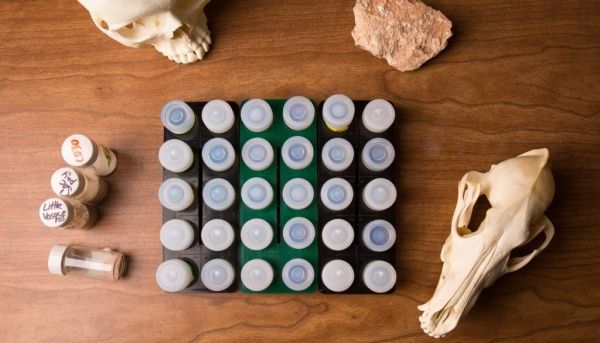Police detectives analyze isotopes in human hair to find out where a murder victim was born and grew up. Researchers from the Smithsonian Tropical Research Institute in Panama, the University of Florida and the University of Arizona combined clues from carbon, nitrogen, oxygen and strontium isotope analysis discovering the earliest evidence that the Maya raised and traded dogs and other animals, probably for ceremonial use.
The results were published today in the Proceedings of the National Academy of Sciences.
“In Asia, Africa and Europe, animal management went hand-in-hand with the development of cities,” said study lead author Ashley Sharpe, an archaeologist at the Smithsonian Tropical Research Institute who received her Ph.D. from UF in 2016. “But in the Americas, people may have raised animals for ceremonial purposes. The growth of cities doesn’t seem to be directly tied to animal husbandry.”
Study researchers found that animal trade and management began in the Preclassic Period some 2,500 years ago and intensified during the Classic Period, making it likely that organized ceremonies involving animal and human sacrifice and raising animals for food played important roles in the development of Maya civilization.
Continue reading at University of Florida.
Image via University of Florida.


